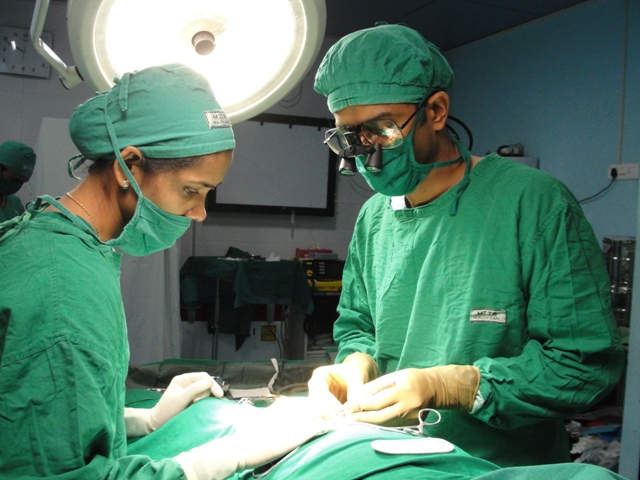Hypospadias Foundation starts Clinic for Hypospadias Treatment & Surgery in Bahrain
Dr A.K.Singal was an invited speaker at Hypospadias World Congress at Children’s Research Center at Children’s Hospital of Philadelphia, USA, held between 30th October 2019-1st Nov 2019. Dr Singal presented four papers on hypospadias treatment and moderated scientific sessions during the conference.
The conference saw participation from more than 150 pediatric urologists and hypospadias specialists from across the world. The conference solely focussed on hypospadias. Various aspects of hypospadias were discussed such as etiology, diagnosis, hormonal tests and supplementation (testosterone injections), surgery techniques and complications/ results of hypospadias surgeries.

Dr A.K.Singal

Dr Singal with Dr Long & Dr Zaontz
Dr Singal presented the following lectures and papers in the World Congress:
- Buccal inlay graft for failed hypospadias- Dr Singal showed technique of buccal (oral) mucosa graft inlay surgery and its results in failed hypospadias cases.
- Considerations in adult hypospadias repairs- Adult hypospadias are difficult to manage especially if the surgery done in childhood has failed. Dr Singal showed innovative surgery techniques for such adult hypospadias cases for best outcomes.
- Reimagined Byar’s flaps for staged hypospadias repairs- For hypospadias with severe chordee, it is important that the penile curvature gets fully corrected in first stage and then second stage surgery is done for bringing the urethra to the tip of penis. In expert hands the results of two stage surgery for hypospadias with severe chordee is very good. Dr Singal showed finer nuances of surgery to achieve best results to the audience.
- Parental Awareness survey for families with hypospadias: Families of children or adults with hypospadias are often not fully aware of the extent of disease and what it means in the long run. Dr Singal and his team conducted a study of 150 families to understand about their concerns about hypospadias and their knowledge level about the disease/ surgery.
Overall the three-day conference resulted in great mutual exchange of ideas and also helped younger generation of surgeons learn from eminent faculty from all over the world.

